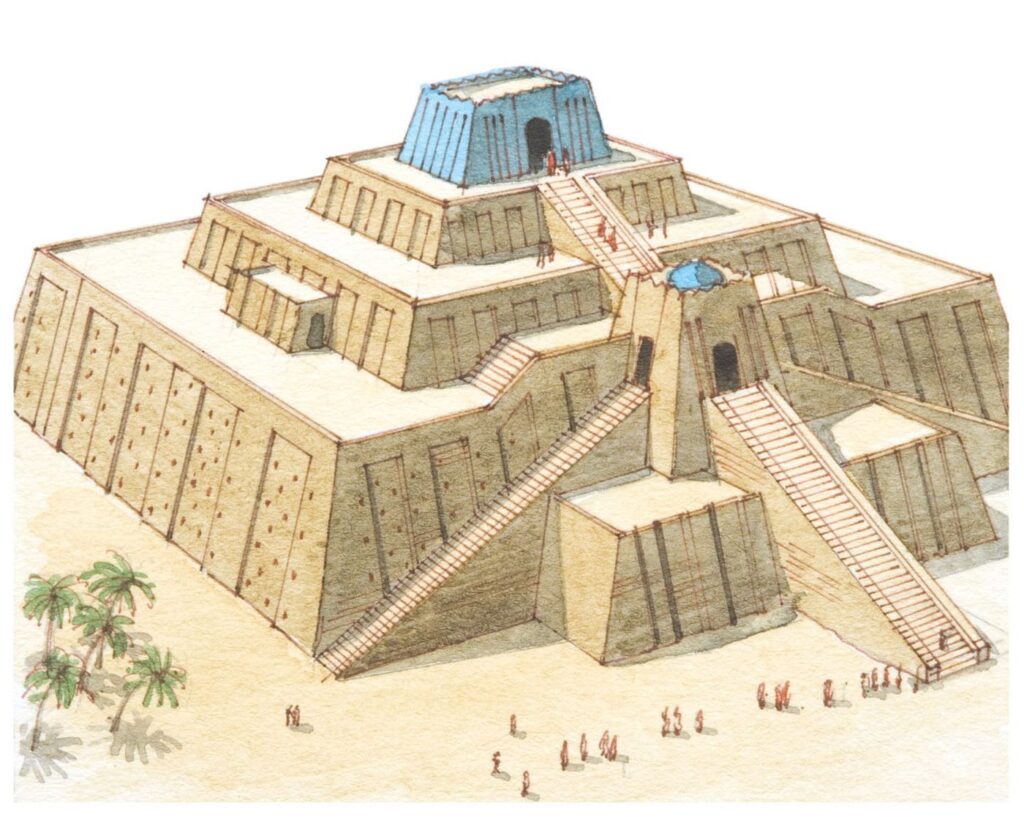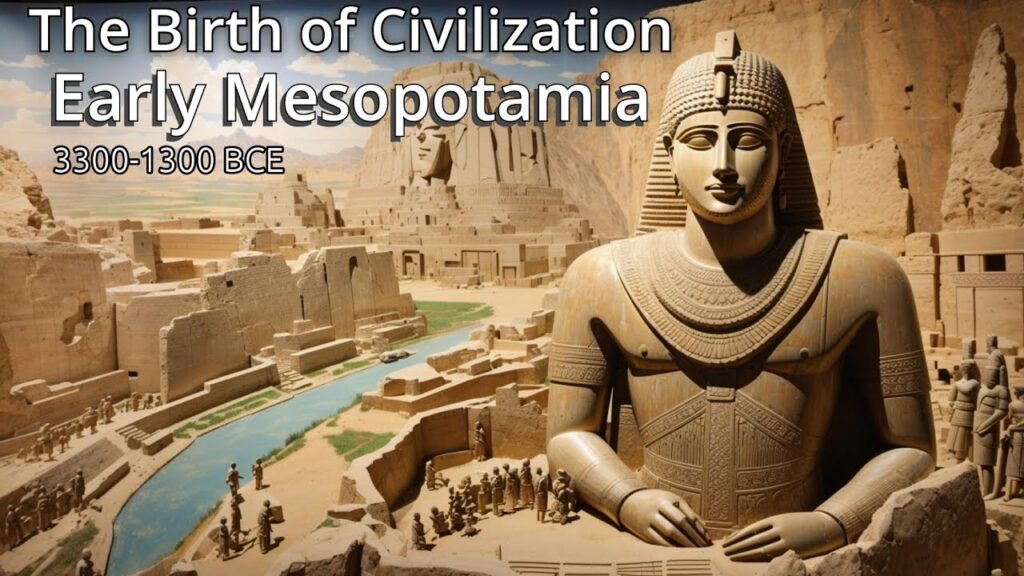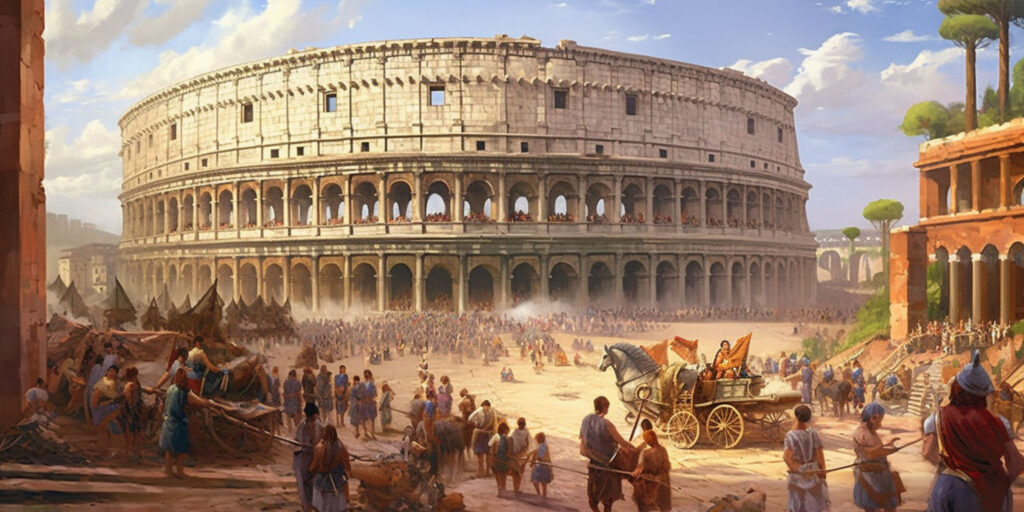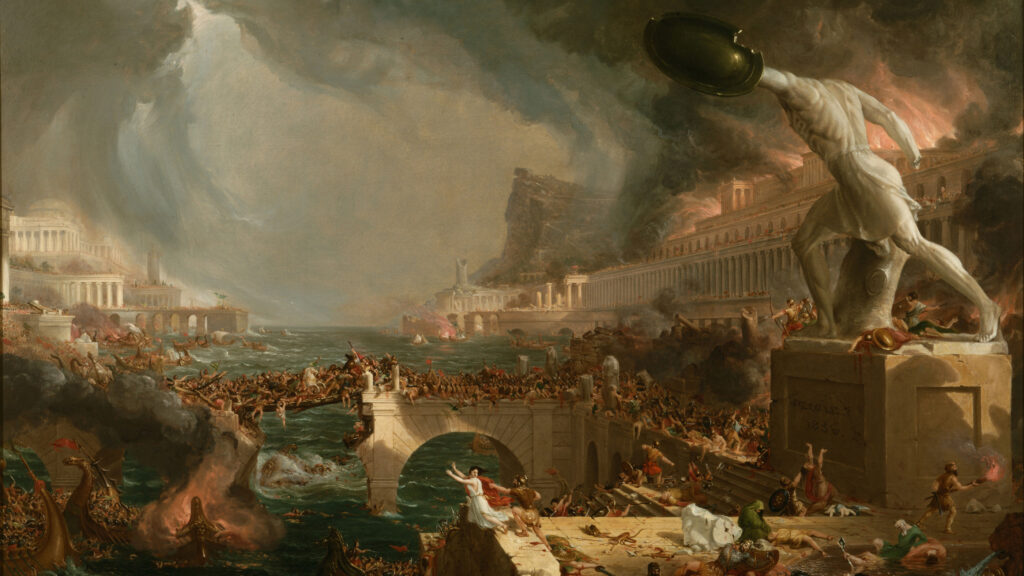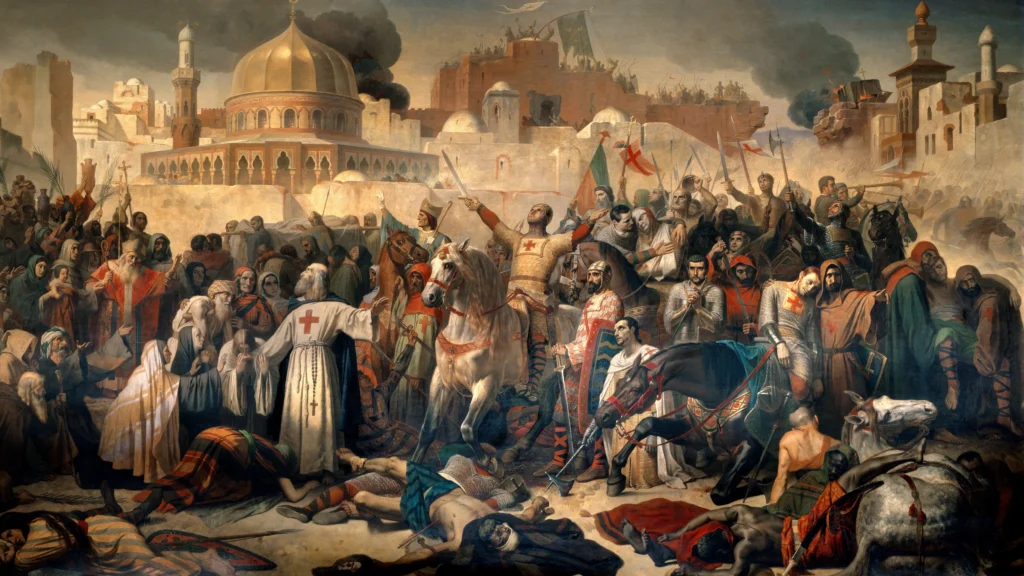
The History of Hinduism: An Extensive A to Z Exploration
Hinduism is not just a religion but a way of life, a comprehensive culture, and a vast philosophy that has influenced billions of people over millennia. It is one of the oldest religions in the world, with roots that trace back to the ancient civilizations of the Indian subcontinent. This article offers an extensive overview of Hinduism from A to Z, delving deeply into its history, evolution, key concepts, and significant figures.
A – Aryans and the Vedic Period
- Aryans: The Aryans were Indo-European-speaking people who migrated into the Indian subcontinent around 1500 BCE. Their arrival marks a significant period in the history of Hinduism, as they brought with them the Vedic traditions, which form the bedrock of Hindu religious practices. The Aryans were primarily pastoralists, and their religious practices centered around fire sacrifices (yajnas) and the worship of natural forces like fire (Agni), wind (Vayu), and rain (Indra).
- Vedic Period: This era, named after the Vedas—the oldest sacred texts of Hinduism—saw the compilation of these scriptures, which include hymns, chants, and rituals. The four Vedas (Rigveda, Samaveda, Yajurveda, and Atharvaveda) were composed during this time, and they reflect the religious, social, and philosophical ideas of the Aryans. The Vedic Period laid the foundation for many aspects of Hinduism, including the caste system and rituals like yajna (sacrificial fire ceremonies).
B – Bhagavad Gita and Bhakti Movement
- Bhagavad Gita: The Bhagavad Gita is a 700-verse scripture that is part of the Indian epic Mahabharata. It takes the form of a dialogue between Prince Arjuna and Krishna, who serves as his charioteer. The Gita addresses the moral and philosophical dilemmas faced by Arjuna as he prepares to go into battle, offering profound insights into duty (dharma), righteousness, and devotion (bhakti). It introduces the concept of selfless action (karma yoga) and has been interpreted in various ways over the centuries, influencing Hindu thought, philosophy, and spirituality.
- Bhakti Movement: The Bhakti Movement was a significant religious movement that began in South India in the 7th century CE and later spread to the North. It emphasized personal devotion to a particular deity, whether Vishnu, Shiva, or a goddess like Durga, over ritualistic practices. The movement promoted the idea that salvation could be attained through love and devotion to God, regardless of one’s caste or social status. Saints like Ramanuja, Kabir, Mirabai, and Tulsidas were prominent figures in this movement, and their hymns and poems continue to inspire millions.
C – Caste System and Cultural Contributions
- Caste System (Varna and Jati): The caste system, or varna system, originated during the Vedic period and became a defining feature of Hindu society. It divides people into four main categories: Brahmins (priests and scholars), Kshatriyas (warriors and rulers), Vaishyas (merchants and landowners), and Shudras (laborers and service providers). Over time, these broad categories further divided into thousands of sub-castes known as jatis, based on occupation and region. The caste system has been both a source of social organization and a subject of controversy, especially in modern times when reform movements and legal measures have challenged its discriminatory aspects.
- Cultural Contributions: Hinduism has significantly contributed to the world’s cultural heritage. Indian classical music and dance forms, such as Bharatanatyam, Kathak, and Carnatic music, have deep roots in Hindu devotional practices. The architectural marvels of Hindu temples, like the Brihadeeswara Temple in Tamil Nadu and the Sun Temple in Konark, are not only places of worship but also exemplars of ancient engineering and artistry. Additionally, the rich tradition of Hindu literature, including the Mahabharata, Ramayana, and the Puranas, has profoundly influenced Indian art, drama, and folklore.
D – Dharma and the Development of Hindu Philosophy
- Dharma: Dharma is one of the central concepts in Hinduism, often translated as “righteousness,” “duty,” or “moral law.” It refers to the ethical responsibilities and duties that each individual must follow according to their position in life (caste, stage of life, and personal nature). The concept of dharma is closely linked to karma and is believed to maintain the cosmic order. Following one’s dharma leads to spiritual growth and harmony in society, while neglecting it leads to chaos and suffering.
- Development of Hindu Philosophy: Hindu philosophy is diverse, encompassing various schools of thought that have developed over millennia. The six orthodox schools (darshanas) of Hindu philosophy are Nyaya (logic), Vaisheshika (atomism), Samkhya (enumeration), Yoga (discipline), Mimamsa (ritual exegesis), and Vedanta (end of the Vedas). Each school offers a unique perspective on issues such as the nature of reality, the self, and the path to liberation. Among these, Vedanta, particularly Advaita Vedanta, which teaches the oneness of the individual soul (atman) and the supreme reality (Brahman), has had a profound influence on Hindu thought.
E – Epics and Ethics
- Epics (Mahabharata and Ramayana): The Mahabharata and Ramayana are more than just stories; they are spiritual and ethical guides that have shaped Hindu culture and moral values. The Mahabharata, attributed to the sage Vyasa, is an extensive narrative that explores the complexities of human life, politics, and morality. The Ramayana, attributed to the sage Valmiki, tells the story of Rama, the ideal prince, and his quest to rescue his wife Sita. These epics have been retold in countless forms, including oral traditions, theater, dance, and television, making them accessible to all layers of society.
- Ethics in Hinduism: Hindu ethics are deeply rooted in the concepts of dharma and karma. The principles of ahimsa (non-violence), satya (truthfulness), and asteya (non-stealing) are fundamental ethical guidelines. Hindu ethics also emphasize the importance of family, community, and social responsibility. The idea of karma reinforces the belief that ethical actions lead to positive outcomes, both in this life and the next. Hindu texts like the Manusmriti and the Dharmashastras provide detailed codes of conduct for different aspects of life, including law, governance, and personal behavior.
F – Festivals and Forms of Worship
- Festivals: Hinduism is known for its vibrant and diverse festivals, each with its own religious significance and cultural practices. Some of the most widely celebrated Hindu festivals include:
- Diwali: Known as the festival of lights, Diwali celebrates the victory of light over darkness and good over evil. It is associated with the return of Lord Rama to Ayodhya after defeating the demon king Ravana. Homes are decorated with oil lamps, fireworks are set off, and sweets are shared among family and friends.
- Holi: The festival of colors, Holi marks the arrival of spring and celebrates the divine love of Radha and Krishna. It is characterized by the playful throwing of colored powders and water, symbolizing the vibrancy of life.
- Navaratri: A nine-night festival dedicated to the goddess Durga, Navaratri celebrates the victory of the goddess over the buffalo demon Mahishasura. It culminates in Dussehra, which marks Rama’s victory over Ravana.
- Raksha Bandhan: Celebrating the bond between brothers and sisters, Raksha Bandhan involves the tying of a protective thread (rakhi) by the sister on her brother’s wrist, symbolizing love and protection.
- Forms of Worship: Hindu worship (puja) can take many forms, ranging from elaborate temple ceremonies to simple daily prayers at home. Key elements of worship include offerings of flowers, food, and incense, recitation of mantras, and meditation. Temple worship often involves rituals led by priests, while home worship allows for more personal and intimate expressions of devotion. Hinduism also emphasizes the importance of pilgrimage (tirtha), with sacred sites like Varanasi, Rishikesh, and the temples of South India being major destinations for devotees.
G – Gods, Goddesses, and Gurus
- Gods and Goddesses: Hinduism is often described as a polytheistic religion, but it is more accurately understood as henotheistic—acknowledging a single Supreme Being while worshiping many gods and goddesses as manifestations of that being. Major deities include:
- Brahma: The creator god, responsible for the creation of the universe and all living beings. Brahma is less commonly worshiped than other major deities.
- Vishnu: The preserver, who maintains the order and harmony of the universe. Vishnu is worshiped through his ten avatars, including Rama and Krishna, who incarnate to restore dharma.
- Shiva: The destroyer and transformer, who is responsible for the destruction of the universe in order to recreate it. Shiva is also worshiped as the ideal yogi and the lord of meditation.
- Durga: The warrior goddess who embodies the fierce aspect of the divine feminine, protecting the world from evil forces.
- Lakshmi: The goddess of wealth and prosperity, often depicted alongside her consort Vishnu.
- Saraswati: The goddess of knowledge, music, and the arts, worshiped by students and scholars.
- Gurus: The guru, or spiritual teacher, plays a vital role in Hinduism. A guru is regarded as a guide who imparts wisdom and helps disciples on their spiritual path. The guru-disciple relationship is considered sacred, and the teachings of the guru are highly revered. Historical figures like Adi Shankaracharya, who consolidated the Advaita Vedanta philosophy, and modern gurus like Ramakrishna Paramahamsa, Swami Vivekananda, and Paramahansa Yogananda have had a profound impact on Hindu thought and spirituality.
H – Harappan Civilization and Hindu Law
- Harappan Civilization: The Harappan Civilization, also known as the Indus Valley Civilization, predates the Vedic period and is one of the earliest urban cultures in the world, flourishing from around 2600 to 1900 BCE. Although direct connections between the Harappan Civilization and later Hinduism are still debated, some artifacts, such as the “Pashupati seal” depicting a seated figure surrounded by animals, suggest possible proto-Hindu elements. The decline of this civilization remains a mystery, but its advanced urban planning, trade networks, and writing system indicate a highly developed society that may have influenced later Vedic culture.
- Hindu Law: Hindu law, or dharmaśāstra, refers to the ancient legal and ethical codes that govern Hindu society. The Manusmriti, also known as the Laws of Manu, is one of the most important dharmaśāstras, providing guidelines on everything from governance and social duties to marriage and inheritance. Hindu law emphasizes the concept of dharma, which varies according to an individual’s caste, age, and gender. While these texts have historically played a significant role in shaping Hindu society, modern India has seen legal reforms that challenge some of their more rigid and discriminatory aspects, particularly regarding caste and gender equality.
I – India: The Birthplace and Homeland of Hinduism
- India’s Role: India is not only the birthplace of Hinduism but also its cultural and spiritual heart. The religion has profoundly influenced every aspect of Indian life, from art and literature to politics and social customs. Major cities like Varanasi (considered the spiritual capital of Hinduism), Rishikesh (a center for yoga and meditation), and Tirupati (home to the famous Venkateswara Temple) are key pilgrimage sites that attract millions of devotees each year. India’s history is deeply intertwined with Hinduism, with the religion shaping the country’s festivals, rituals, and daily practices.
- Hinduism’s Influence on Indian Culture: Hinduism has also significantly influenced Indian culture, contributing to its rich tapestry of languages, art forms, and culinary traditions. The Sanskrit language, in which many Hindu scriptures are written, has been a major influence on Indian literature and linguistics. Indian classical dance and music, particularly forms like Bharatanatyam and Carnatic music, have their roots in Hindu devotional practices. Hinduism’s emphasis on vegetarianism and ahimsa (non-violence) has also shaped Indian cuisine, which is known for its diversity and richness in vegetarian dishes.
J – Jati and Jainism
- Jati: Jati, meaning “birth,” refers to the thousands of sub-castes in Hindu society. Unlike the broader varna system, which categorizes society into four main classes, jati represents a more granular division based on occupation, region, and lineage. Jati plays a significant role in social organization, affecting aspects such as marriage, occupation, and community life. Although jati divisions have historically contributed to social stratification, in modern India, these distinctions are increasingly challenged by movements advocating for social equality and reform.
- Jainism: Jainism, while distinct from Hinduism, shares many cultural and religious elements due to its origins in the Indian subcontinent. Jainism emphasizes non-violence (ahimsa) to an extreme degree, teaching that all living beings have a soul and should not be harmed. Jain ethics also include strict vegetarianism, truthfulness, and asceticism. While Jainism is a separate religion, its influence on Hindu practices, particularly in the areas of ethics and diet, is significant.
K – Karma and Kings
- Karma: Karma is one of the core concepts in Hinduism, representing the law of cause and effect that governs the universe. According to the doctrine of karma, every action has consequences that will manifest either in this life or in future lives. Good deeds (punya) lead to positive outcomes, while bad deeds (papa) result in suffering. The concept of karma is closely linked to the cycle of samsara (rebirth) and the ultimate goal of achieving moksha (liberation from the cycle of birth and death). Karma also reinforces the importance of dharma, as following one’s righteous duty is believed to generate good karma.
- Kings and Rulers: Hinduism has influenced the governance of India through its concept of dharma and the role of the king as the upholder of justice and order. The ancient texts like the Arthashastra, attributed to the scholar Chanakya, provide detailed guidelines on statecraft, economics, and military strategy, with an emphasis on the king’s duty to protect his subjects and maintain dharma. Famous Hindu kings like Ashoka, who later embraced Buddhism, and Chhatrapati Shivaji Maharaj, known for his resistance against the Mughal Empire, are celebrated not only for their military prowess but also for their adherence to dharma.
L – Liberation (Moksha) and Literature
- Moksha: Moksha is the ultimate spiritual goal in Hinduism, representing liberation from the cycle of samsara (rebirth). It is a state of eternal bliss and union with the divine, where the soul (atman) is freed from the bonds of karma and the material world. Achieving moksha requires the realization of one’s true self (atman) as identical with the ultimate reality (Brahman). There are various paths to moksha, including the path of knowledge (jnana yoga), the path of devotion (bhakti yoga), and the path of selfless action (karma yoga). The concept of moksha is central to Hindu philosophy and spiritual practice, guiding the ethical and spiritual lives of Hindus.
- Hindu Literature: Hinduism boasts a vast and rich literary tradition, encompassing a wide range of texts that include scriptures, epics, philosophical treatises, and devotional poetry. The Vedas, Upanishads, and Bhagavad Gita form the core of Hindu sacred literature. The Mahabharata and Ramayana, the great epics of India, are not only religious texts but also cultural treasures that have shaped Indian art, drama, and folklore. The Puranas, a genre of ancient Indian literature, contain myths, legends, and genealogies of gods, goddesses, heroes, and kings, providing a rich tapestry of stories that have been passed down through generations. Devotional poetry, such as the hymns of the Alvars and Nayanars in South India, expresses the intense personal devotion to deities like Vishnu and Shiva and continues to inspire religious and artistic expression.
M – Monism, Meditation, and Mandalas
- Monism: Monism is the philosophical belief that all reality is ultimately one. In Hinduism, this concept is most clearly expressed in the Advaita Vedanta school of thought, which teaches that the individual soul (atman) and the universal soul (Brahman) are the same. According to Advaita Vedanta, the perceived duality of the world is an illusion (maya), and liberation (moksha) is achieved by realizing the non-duality of atman and Brahman. This idea contrasts with other schools of Hindu thought, such as Dvaita Vedanta, which maintains a distinction between the individual soul and the Supreme Being.
- Meditation (Dhyana): Meditation, or dhyana, is a key practice in Hinduism, aimed at achieving spiritual insight and inner peace. It involves focusing the mind and eliminating distractions to attain a state of deep concentration and communion with the divine. The practice of meditation is central to various schools of Hindu thought, particularly in the Yoga tradition, where it is seen as a means to achieve self-realization and liberation. Techniques of meditation include breath control (pranayama), mantra repetition, and visualization. Meditation has been practiced in India for thousands of years and has influenced other spiritual traditions, including Buddhism and Jainism.
- Mandalas: Mandalas are symbolic geometric designs used in Hindu and Buddhist meditation practices. They represent the universe and are often used as tools for focusing the mind during meditation. In Hinduism, mandalas are associated with various deities and are used in rituals and spiritual practices to create a sacred space. The intricate patterns of mandalas are believed to guide the practitioner towards a deeper understanding of the self and the cosmos. Mandalas are not only spiritual symbols but also have significant cultural and artistic value, with their intricate designs appearing in Hindu temple architecture and art.
N – Nirvana and Non-Violence (Ahimsa)
- Nirvana: In Hinduism, nirvana is often synonymous with moksha, the liberation from the cycle of samsara (rebirth) and the realization of the true self (atman) as one with Brahman. It is a state of eternal peace, bliss, and freedom from all forms of suffering. The concept of nirvana is also prominent in Buddhism, where it refers to the cessation of desire and the end of suffering. While the term is used differently in Hinduism and Buddhism, both traditions view nirvana as the ultimate spiritual goal.
- **Non-Viol
ence (Ahimsa)**: Ahimsa, or non-violence, is a fundamental ethical principle in Hinduism. It advocates for the avoidance of harm to all living beings, whether in thought, word, or deed. The concept of ahimsa is closely linked to the principle of karma, as causing harm to others generates negative karma, leading to suffering in future lives. Ahimsa has been a guiding principle for many Hindu reformers and spiritual leaders, most notably Mahatma Gandhi, who used the principle of non-violent resistance (satyagraha) in the struggle for Indian independence. Ahimsa also influences Hindu dietary practices, with many Hindus adopting vegetarianism as a way to minimize harm to living creatures.
O – Om and Orthodox Schools
- Om (Aum): Om is a sacred syllable and sound in Hinduism, considered the primordial sound from which the universe was created. It is often used as a mantra in meditation and ritual practices. The syllable is composed of three sounds—A, U, and M—representing the waking state, the dream state, and the state of deep sleep, respectively. Together, these sounds symbolize the ultimate reality (Brahman) and the entire universe. Om is often chanted at the beginning and end of prayers, and it holds a central place in Hindu spiritual practice.
- Orthodox Schools (Darshanas): Hindu philosophy is divided into six orthodox schools (darshanas), each offering a different approach to understanding the nature of reality, the self, and the path to liberation. These schools are:
- Nyaya: Focuses on logic and epistemology, providing methods for discerning truth.
- Vaisheshika: Concerned with metaphysics, particularly the nature of reality and categories of existence.
- Samkhya: A dualistic philosophy that distinguishes between purusha (consciousness) and prakriti (matter).
- Yoga: Emphasizes spiritual practice, including meditation, ethical conduct, and physical postures, as a means to achieve self-realization.
- Mimamsa: Focuses on the interpretation of Vedic texts and the performance of rituals as a means to uphold dharma.
- Vedanta: Explores the nature of Brahman, the ultimate reality, and the relationship between the individual soul and the divine.
These schools of thought have shaped Hindu religious practices, rituals, and spiritual philosophies for centuries.
P – Puranas and Pilgrimage
- Puranas: The Puranas are a genre of ancient Hindu texts that contain stories, myths, and legends about gods, goddesses, heroes, and kings. There are 18 major Puranas, including the Vishnu Purana, Shiva Purana, and Bhagavata Purana. These texts provide detailed accounts of the creation of the universe, the genealogies of gods and sages, and the history of the world according to Hindu cosmology. The Puranas are also a rich source of moral and religious teachings, and they have played a significant role in shaping popular Hinduism by making complex philosophical concepts accessible to the masses through stories and parables.
- Pilgrimage (Tirtha Yatra): Pilgrimage, or tirtha yatra, is an important aspect of Hindu religious life. Pilgrimages are undertaken to sacred sites (tirthas) that are believed to have special spiritual significance. These sites include rivers, mountains, temples, and cities associated with Hindu gods, saints, or events from mythology. Major pilgrimage sites include Varanasi (on the banks of the Ganges River), Rameswaram (associated with Lord Rama), and the Char Dham (four abodes) circuit, which includes Badrinath, Dwarka, Puri, and Rameswaram. Pilgrimages are seen as acts of devotion that purify the soul, remove sin, and bring the pilgrim closer to moksha.
Q – Quotations from Sacred Texts and Queens
- Quotations from Sacred Texts: Hinduism’s sacred texts are filled with profound teachings and quotations that have guided spiritual practice and moral conduct for centuries. Some notable quotations include:
- From the Bhagavad Gita: “You have the right to perform your duty, but not the fruits of your actions. Never consider yourself the cause of the results of your activities, nor be attached to inaction.” (Bhagavad Gita 2.47)
- From the Upanishads: “That which is the finest essence—this whole world has that as its soul. That is Reality. That is Atman. That art thou.” (Chandogya Upanishad 6.8.7)
- From the Rigveda: “Truth is one; the wise call it by various names.” (Rigveda 1.164.46)
These quotations reflect the diverse philosophical perspectives within Hinduism and continue to inspire spiritual seekers.
- Queens and Female Leaders in Hindu History: Hindu history is replete with powerful queens and female leaders who have made significant contributions to their kingdoms and communities. Notable among them is Rani Lakshmibai of Jhansi, who played a key role in the Indian Rebellion of 1857 against British rule. Another important figure is Ahilyabai Holkar, the queen of the Maratha Empire, who was known for her administrative acumen, charitable works, and patronage of Hindu temples and education. These queens are celebrated not only for their leadership but also for their embodiment of dharma and devotion.
R – Rituals and Reincarnation
- Rituals: Rituals play a central role in Hindu religious practice, serving as a means to connect with the divine, honor ancestors, and mark significant life events. Hindu rituals can be elaborate temple ceremonies or simple daily practices at home. Key rituals include:
- Puja: A worship ceremony that involves offering food, flowers, and prayers to a deity. It can be performed at home or in a temple.
- Yajna: A Vedic ritual involving the offering of oblations into a sacred fire, accompanied by the chanting of mantras.
- Samskaras: Life-cycle rituals that mark significant events, such as birth (Jatakarma), initiation (Upanayana), marriage (Vivaha), and death (Antyeshti).
- Vratas: Vows or observances undertaken for a specific period, often involving fasting and special prayers, to seek divine blessings or fulfill a religious duty.
Rituals are seen as a way to purify the mind, body, and soul, and they reinforce the values of dharma and devotion.
- Reincarnation (Samsara): Reincarnation, or samsara, is the belief in the cycle of birth, death, and rebirth. In Hinduism, the soul (atman) is eternal and undergoes a series of births and deaths, assuming different forms in each life. This cycle continues until the soul achieves moksha, or liberation from samsara, and reunites with Brahman, the ultimate reality. The circumstances of each rebirth are determined by karma, the accumulated actions from previous lives. Reincarnation is a fundamental concept in Hinduism, shaping the religion’s views on life, death, and the afterlife.
S – Sacred Symbols and Shastras
- Sacred Symbols: Hinduism is rich in symbols that carry deep spiritual meanings. Some of the most important symbols include:
- Om (Aum): The sacred syllable that represents the essence of the universe and is used as a mantra in meditation.
- Swastika: An ancient symbol of good fortune, prosperity, and the cyclical nature of life. It is often used in Hindu rituals and decorations.
- Lotus (Padma): A symbol of purity, spiritual enlightenment, and the unfolding of the soul. It is associated with deities like Lakshmi and Brahma.
- Trishula (Trident): The three-pronged weapon of Lord Shiva, representing the three aspects of creation, preservation, and destruction.
- Tilak: A mark worn on the forehead, often made of vermilion, sandalwood paste, or ash, signifying religious affiliation or devotion.
These symbols are not only decorative but also serve as reminders of spiritual truths and the presence of the divine in everyday life.
- Shastras: Shastras are authoritative scriptures that provide guidance on various aspects of life, including law, ethics, rituals, and philosophy. Important shastras include:
- Dharma Shastras: Texts like the Manusmriti, which outline the laws and duties of individuals according to their caste, stage of life, and gender.
- Artha Shastra: A treatise on statecraft, politics, and economics, traditionally attributed to Chanakya, the advisor to the Maurya emperor Chandragupta.
- Kama Shastra: Texts that explore the principles of love, desire, and relationships, with the most famous being the Kama Sutra by Vatsyayana.
- Yoga Shastra: Texts like the Yoga Sutras of Patanjali, which outline the principles and practices of yoga as a path to spiritual liberation.
The shastras have played a crucial role in shaping Hindu society, governance, and individual conduct.
T – Temples and Texts
- Temples (Mandirs): Hindu temples, or mandirs, are sacred spaces where devotees come to worship deities, perform rituals, and seek spiritual solace. Temples vary widely in size and architectural style, reflecting the diversity of Hinduism. Some of the most famous temples include:
- Tirupati Venkateswara Temple: One of the most visited pilgrimage sites in the world, dedicated to Lord Venkateswara (a form of Vishnu).
- Meenakshi Temple: Located in Madurai, Tamil Nadu, this temple is known for its stunning architecture and devotion to Goddess Meenakshi (a form of Parvati).
- Jagannath Temple: Situated in Puri, Odisha, this temple is famous for the annual Rath Yatra (Chariot Festival) and its devotion to Lord Jagannath (a form of Krishna).
- Kedarnath Temple: A revered Shiva temple located in the Himalayas, part of the Char Dham pilgrimage circuit.
Temples are not just places of worship but also centers of community life, education, and cultural preservation.
- Hindu Texts: Hinduism’s vast body of sacred literature is divided into two main categories: Shruti (that which is heard) and Smriti (that which is remembered).
- Shruti: Includes the Vedas and Upanishads, considered the revealed scriptures and the highest authority in Hindu theology.
- Smriti: Includes texts like the Mahabharata, Ramayana, Puranas, and Dharma Shastras, which provide guidance on religious practices, ethics, and social conduct.
These texts have shaped Hindu beliefs, rituals, and practices for millennia and continue to be revered and studied by Hindus around the world.
U – Upanishads and Untouchability
- Upanishads: The Upanishads are a collection of philosophical texts that form the concluding part of the Vedas and are central to Hindu thought. They explore profound spiritual concepts such as Brahman (the ultimate reality), Atman (the self), and the nature of existence. The Upanishads teach that the ultimate goal of life is to realize the oneness of the individual soul (atman) with Brahman. This realization leads to moksha, or liberation from the cycle of birth and rebirth. The Upanishads are highly respected in Hinduism and have had a significant influence on Indian philosophy and spirituality.
- Untouchability: Untouchability is a social practice rooted in the caste system, where certain groups of people, known as Dalits (formerly called “untouchables”), are considered impure and are ostracized by society. This practice has been a source of immense suffering and discrimination for millions of people in India. Hindu reformers, including Mahatma Gandhi and Dr. B.R. Ambedkar, have worked to eradicate untouchability and promote social equality. In modern India, untouchability is outlawed by the constitution, but the legacy of this practice still affects social dynamics in some regions.
V – Vedas and Varna
- Vedas: The Vedas are the oldest and most authoritative scriptures of Hinduism, composed in ancient Sanskrit. There are four Vedas:
- Rigveda: The oldest of the Vedas, containing hymns and praises to various deities.
- Samaveda: Focuses on melodies and chants for rituals.
- Yajurveda: Contains mantras and instructions for performing rituals.
- Atharvaveda: Includes hymns, spells, and incantations for everyday life. The Vedas are considered Shruti texts, meaning they are “heard” or revealed knowledge, and they form the foundation of Hindu religious practices and beliefs.
- Varna: Varna refers to the classification of society into four main categories:
- Brahmins: Priests and teachers, responsible for religious rituals and the preservation of knowledge.
- Kshatriyas: Warriors and rulers, tasked with protecting society and upholding justice.
- Vaishyas: Merchants and farmers, responsible for commerce and agriculture.
- Shudras: Laborers and service providers, responsible for serving the other three varnas. The varna system has been a subject of much debate and criticism, particularly in its rigid and hierarchical application in society. While originally intended as a flexible system based on one’s qualities and work (guna and karma), it has often been associated with social discrimination and exclusion, particularly against the lower castes.
W – Worship and Women in Hinduism
- Worship (Bhakti): Worship in Hinduism, or bhakti, is a deeply personal and devotional practice that involves expressing love and devotion to a deity. It can take many forms, including prayer, singing hymns, offering food, lighting lamps, and performing rituals. Bhakti is not limited to temple worship but can also be practiced at home or in nature. Bhakti movements have played a significant role in the development of Hinduism, emphasizing the importance of a direct, personal relationship with the divine. Saints like Mirabai, Tulsidas, and Kabir have contributed to this tradition, inspiring millions with their devotional poetry and songs.
- Women in Hinduism: The role of women in Hinduism has been diverse and complex, influenced by religious texts, cultural practices, and social norms. Hindu goddesses like Durga, Lakshmi, and Saraswati are revered and worshiped, symbolizing various aspects of power, prosperity, and wisdom. Historically, women have been both venerated and subjected to patriarchal constraints. Practices like Sati (the burning of widows), child marriage, and restrictions on widow remarriage have been challenged and reformed over time. In modern India, women are increasingly asserting their rights and playing prominent roles in all spheres of life, from politics to spirituality. Feminist interpretations of Hindu texts and the rise of women-led religious movements reflect the ongoing evolution of women’s roles in Hinduism.
X – Xenophilia and Xenophobia
- Xenophilia: Hinduism, with its diverse and pluralistic nature, has often embraced ideas, cultures, and practices from outside its traditional boundaries. This openness is reflected in the incorporation of various regional deities, customs, and philosophies into the broader Hindu fold. Throughout its history, Hinduism has shown a capacity for adaptation and integration, whether through the acceptance of foreign influences like the Indo-Greek syncretism during the ancient period or the adoption of new spiritual movements like the Bhakti and Sufi traditions.
- Xenophobia: Despite its generally inclusive nature, Hinduism, like all religions, has also experienced periods of xenophobia and resistance to external influences. Historical events, such as invasions and colonial rule, have sometimes led to a defensive stance, resulting in the rejection of foreign customs and religions. In modern times, Hindu nationalism has occasionally manifested as xenophobia, particularly in the form of resistance to religious conversion or perceived threats to Hindu culture and identity.
Y – Yoga and Yugas
- Yoga: Yoga is a spiritual, mental, and physical practice with its roots in Hindu philosophy. The word “yoga” means union, referring to the union of the individual soul with the divine. There are several types of yoga, including:
- Hatha Yoga: Focuses on physical postures (asanas) and breath control (pranayama) to prepare the body for meditation.
- Raja Yoga: Known as the “royal path,” it emphasizes meditation and the control of the mind to achieve self-realization.
- Bhakti Yoga: The path of devotion, involving the worship of a personal god and cultivating love and devotion.
- Karma Yoga: The path of selfless action, emphasizing the importance of performing one’s duty without attachment to the results.
- Jnana Yoga: The path of knowledge, involving the study of scriptures and self-inquiry to realize the true nature of the self. Yoga is a comprehensive system for personal and spiritual development, and it has gained global popularity as a means to achieve physical health, mental clarity, and spiritual growth.
- Yugas: In Hindu cosmology, time is divided into four ages, or yugas, each with distinct characteristics:
- Satya Yuga: The “Age of Truth,” a golden age of virtue and righteousness, lasting 1,728,000 years.
- Treta Yuga: The “Silver Age,” where virtue begins to decline, lasting 1,296,000 years.
- Dvapara Yuga: The “Bronze Age,” where moral decline accelerates, lasting 864,000 years.
- Kali Yuga: The “Iron Age,” an age of darkness, ignorance, and strife, lasting 432,000 years. We are currently in the Kali Yuga, which is believed to have begun over 5,000 years ago. The yugas represent the cyclical nature of time in Hinduism, where each cycle ends with a period of dissolution (pralaya) before the universe is renewed.
Z – Zebu and Zeal
- Zebu: The zebu, a species of domesticated cattle native to South Asia, is considered sacred in Hinduism, especially in its role as the companion of Lord Shiva in the form of Nandi, the bull. Cows and cattle are venerated in Hindu culture, symbolizing non-violence, motherly nurturing, and the sustenance of life. The protection of cows is a significant aspect of Hindu practice, with the cow often referred to as “Gau Mata” (Mother Cow). The zebu, with its distinctive hump, has been an integral part of Indian agriculture and religious rituals for millennia.
- Zeal: Zeal in Hinduism refers to the fervent devotion and enthusiasm that practitioners bring to their religious duties, spiritual practices, and acts of worship. This zeal is often expressed through participation in festivals, pilgrimages, and the daily observance of rituals. The intensity of one’s devotion (bhakti) is considered a key factor in spiritual progress, with saints and devotees throughout Hindu history exemplifying the power of unwavering zeal in attaining divine grace and enlightenment.


